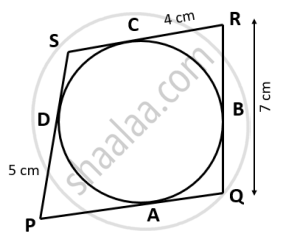Advertisements
Advertisements
प्रश्न
In the figure , Δ PQR is an isosceles triangle with PQ = PR, and m ∠ PQR = 35°. Find m ∠ QSR and ∠ QTR.
उत्तर
In ΔPQR, We have
PQ = PR
⇒ ∠ PQR = ∠ PRQ
⇒ ∠ PRQ = 35°
∴ ∠ QPR = 180° - ( ∠ PQR + ∠ PRQ)
∴ ∠ QPR = 180° - ( 35° + 35°) = 110°
Since PQTR is a cyclic quadrilateral.
∴ ∠ P + ∠ T = 180°
∴ ∠ T = 180° - 110° = 70°.
In cyclic quadrilateral QSRT, we have
∴ ∠ S + ∠ T = 180°
⇒ ∠ S = 180° - 70° = 110°.
APPEARS IN
संबंधित प्रश्न
ABCD is a cyclic quadrilateral in which BC is parallel to AD, angle ADC = 110° and angle BAC = 50°. Find angle DAC and angle DCA.
Bisectors of vertex angles A, B, and C of a triangle ABC intersect its circumcircle at the points D, E and F respectively. Prove that angle EDF = 90° – `1/2` ∠A.
In a cyclic quadrilateral ABCD, ∠A : ∠C = 3 : 1 and ∠B : ∠D = 1 : 5; find each angle of the quadrilateral.
In the given figure, ABCD is a cyclic quadrilateral, PQ is tangent to the circle at point C and BD is its diameter. If ∠DCQ = 40° and ∠ABD = 60°, find;
- ∠DBC
- ∠BCP
- ∠ADB
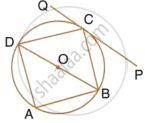
In following fig., O is the centre of the circle, prove that ∠x =∠ y + ∠ z.
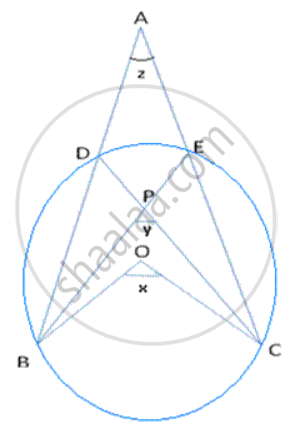
If ABCD is a cyclic quadrilateral in which AD || BC. Prove that ∠B = ∠C.
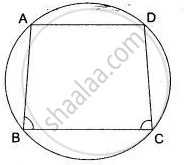
The diagonals of a cyclic quadrilateral are at right angles. Prove that the perpendicular from the point of their intersection on any side when produced backward bisects the opposite side.
In the adjoining figure, AB is the diameter of the circle with centre O. If ∠BCD = 120°, calculate:
(i) ∠BAD (ii) ∠DBA
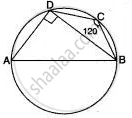
If O is the centre of the circle, find the value of x in each of the following figures
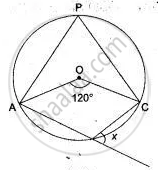
In the given figure, the sides of the quadrilateral PQRS touches the circle at A, B, C and D. If RC = 4 cm, RQ = 7 cm and PD = 5 cm. Find the length of PQ:
